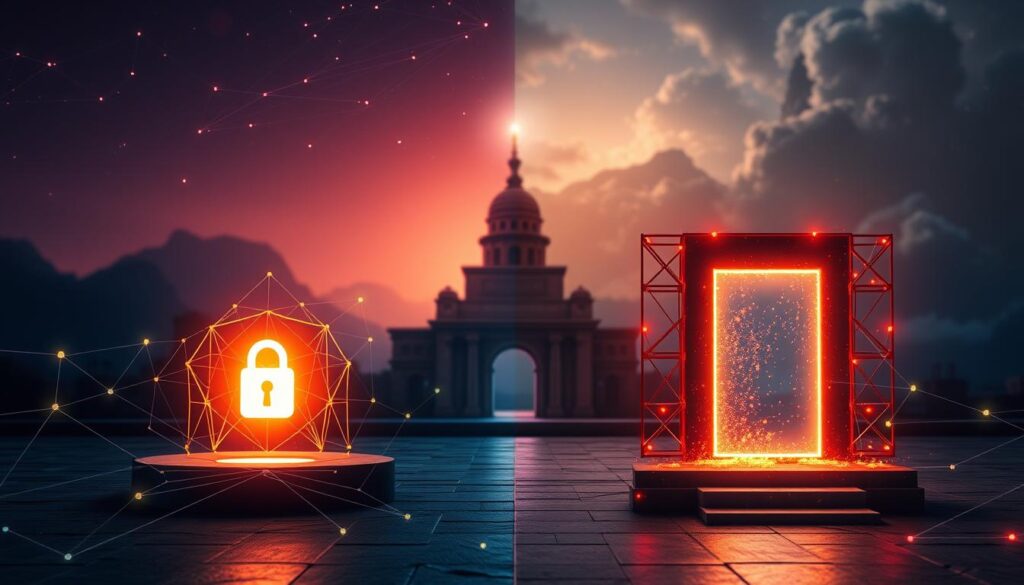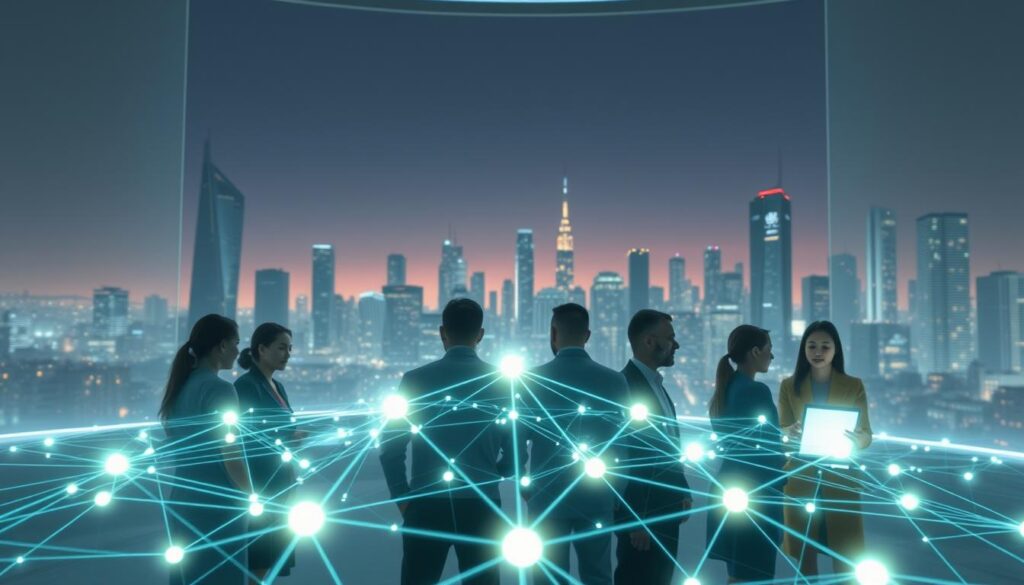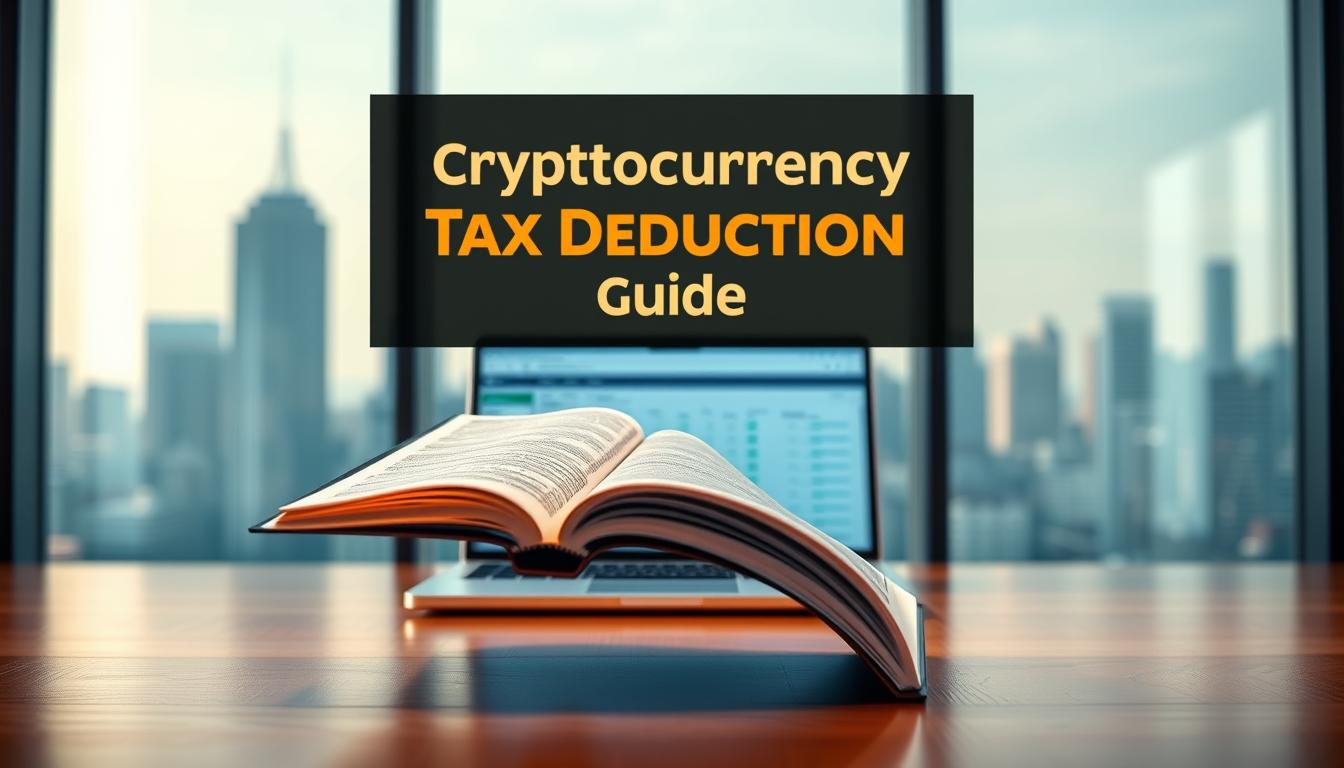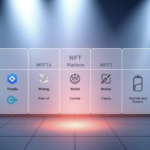Now Reading: A Beginner’s Guide to Tokenization of Real-World Assets
- 01
A Beginner’s Guide to Tokenization of Real-World Assets
A Beginner’s Guide to Tokenization of Real-World Assets
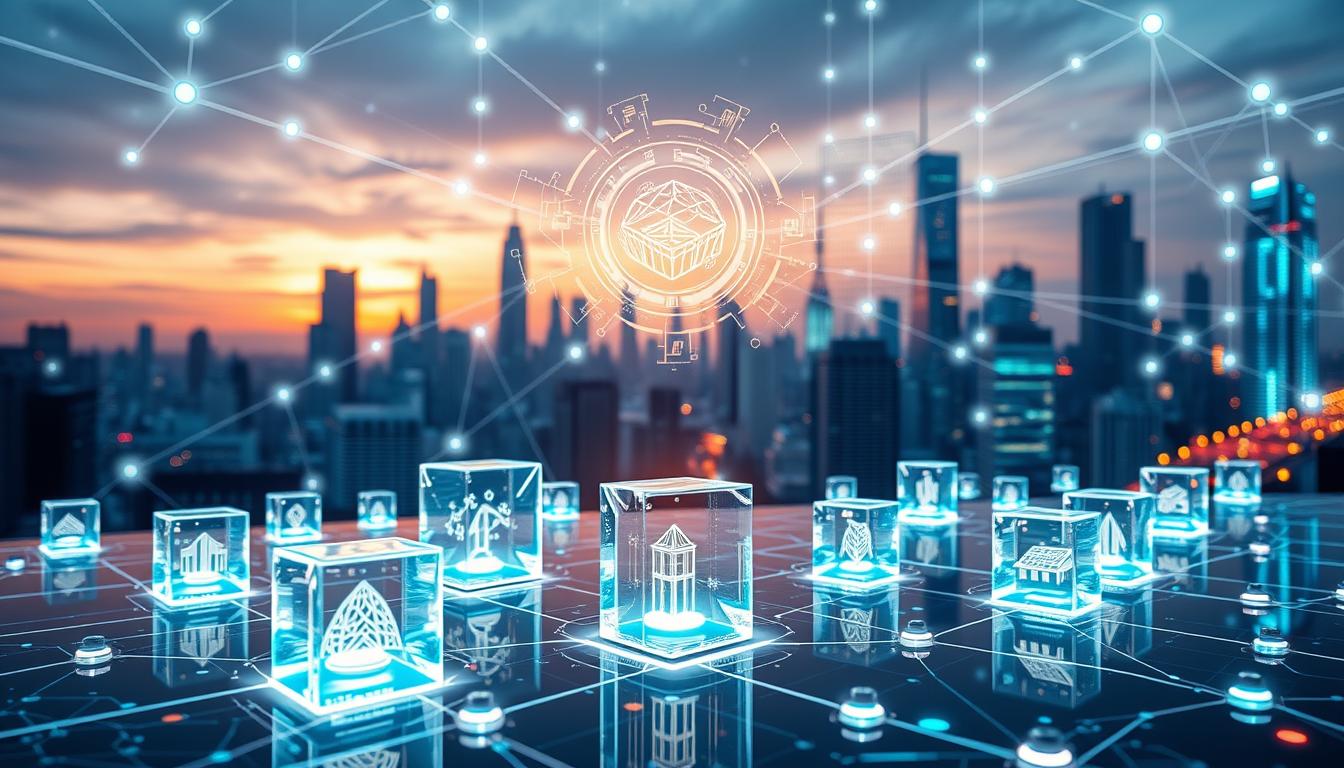
Tokenization of real-world assets is changing how we own and trade physical items. It turns assets like real estate, art, or commodities into digital tokens on blockchain networks. This makes investments more open to everyone.
These tokens show fractional ownership. They let anyone buy a share of valuable items. Before, these items were only for the rich.
Key Takeaways
- Tokenization of real-world assets uses blockchain to digitize ownership rights.
- It breaks down barriers to entry for investing in otherwise illiquid assets.
- Real estate, art, and commodities are leading industries adopting this technology.
- Blockchain ensures transparency and security for all transactions.
- This guide explains technical concepts in simple terms for newcomers.
Understanding the Basics of Asset Tokenization
Tokenization uses blockchain technology to turn physical or financial assets into digital units. These tokenized assets show who owns what, making it easier to buy and sell. It simplifies complex systems into easy-to-use digital formats for the global market.
What Does Tokenization Actually Mean?
Tokenization breaks down assets like real estate or art into digital tokens on a blockchain. Think of a property split into 1,000 tokens, each worth 0.1% of the property. This method, as explained in Chainalysis’ guide, makes investing easier. Each token is like a digital proof of ownership.
The Evolution From Traditional Assets to Digital Tokens
Before, owning assets meant dealing with paper deeds or certificates. Now, blockchain technology uses decentralized ledgers instead. Art buyers no longer need galleries; they can invest in fractions of a painting with tokens. This change opens up high-value items to more investors, without the need to own the physical item.
Key Components of the Tokenization Process
- Digitizationation: Creating tokens that mirror real-world asset value.
- Legal Frameworks: Ensuring tokens comply with securities laws.
- Blockchain Platform: Choosing a blockchain (like Ethereum) to host the tokens.
These steps turn real assets into tradable tokenized assets, opening new markets for investors.
The Technology Behind Tokenization of Real-World Assets
Blockchain technology is at the heart of blockchain asset tokenization. It turns real-world assets into digital units. This system keeps track of who owns what and who has transferred it, all on a secure, shared ledger. It’s perfect for asset-backed tokens because it can’t be changed.
This tech makes it easy to digitize things like real estate and art. It’s all about making things clear and safe.
Blockchain as the Foundation of Asset Tokenization
Public blockchains, like Ethereum, are open to everyone. They let anyone check transactions. Private blockchains, like Hyperledger Fabric, are for businesses. They keep things private but still keep records forever.
This means no more arguing over who owns what.
Smart Contracts and Their Role in Tokenization
Smart contracts are like digital lawyers. They make deals happen without needing a third party. For example, buying a piece of a property with asset-backed tokens means the contract handles the transfer automatically.
This makes buying and selling faster and more reliable than old ways.
Public vs. Private Blockchain Solutions for Asset Tokenization
- Public blockchains: Great for open markets, but need extra security.
- Private blockchains: Best for companies that want to keep things private, like banks.
Which one to use depends on the asset and how open you want it to be. Both use strong cryptography to keep trust in digital assets.
Types of Assets That Can Be Tokenized
Tokenization isn’t just for one type of asset. It can turn anything valuable into a blockchain token. Here’s how different areas benefit from this:
- Real Estate: Turning properties into tokens lets people own parts of them. Sites like Propy and Harbor make it easier for more people to invest in big properties. For example, a $5 million apartment can be split into tokens, allowing buyers to own a piece of it.
- Financial Instruments: Stocks, bonds, and commodities become digital securities on blockchain. Projects like Polymath make trading and following rules easier.
- Art and Collectibles: Rare items like paintings or memorabilia can be made liquid through tokenization. Maecenas lets investors buy shares of art, reducing storage risks and proving authenticity with blockchain.
- Intellectual Property: Patents, music rights, or copyrights can be tokenized. This lets creators share royalties with investors or fans directly.
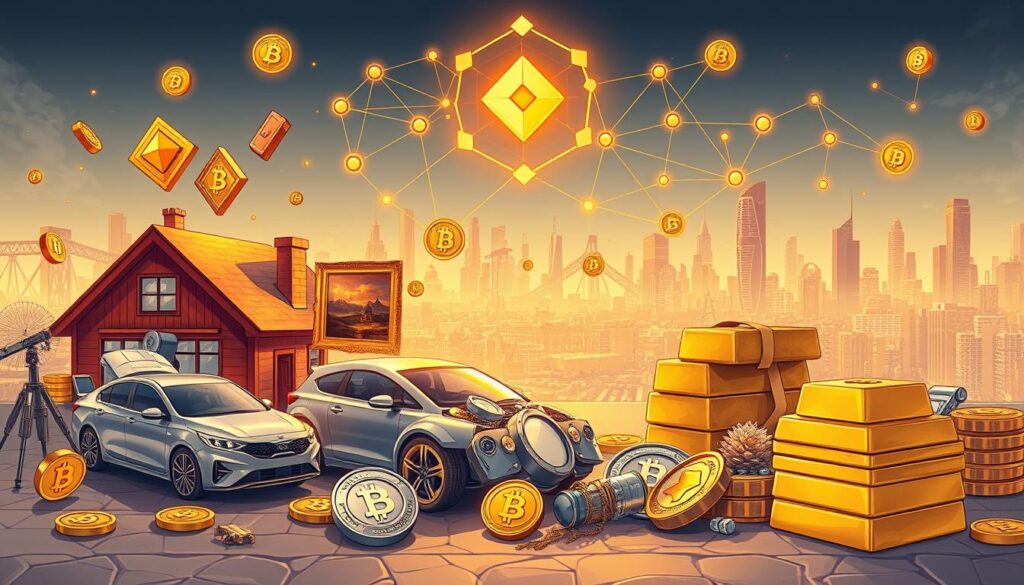
Even things like gold or oil are being turned into tokens. Platforms like PAX Gold (PAXG) show real gold reserves, combining old assets with blockchain’s transparency. This opens up global markets to assets once limited by location or money. As tech gets better, more areas will use tokenization to reach their full potential.
Real Estate Tokenization: Revolutionizing Property Investment
Real estate is changing with fractional ownership and blockchain. Now, you can buy shares in big properties like office buildings or homes. This makes investing in real estate more open to everyone, not just the rich.
How Fractional Ownership Works in Real Estate Tokens
Properties are turned into digital tokens by splitting ownership. Each token is a share of the property’s value and rights. This way, you can invest in big properties with just a little money.
Case Studies: Successful Real Estate Tokenization Projects
- RealT: Sells tokens for residential mortgages, offering 8-12% annual returns.
- Propy: Tokenized luxury apartments in prime U.S. locations, raising $25M in a 2022 offering.
- Harbor: Facilitates SEC-compliant token sales for commercial real estate, attracting accredited investors.
Regulatory Considerations in Property Tokenization
In the U.S., real estate tokens are seen as securities. Projects must follow SEC rules or get special permission. Places like Wyoming have made laws to help this new way of investing. But, investors and creators must follow these rules carefully to stay safe and keep innovating.
Tokenizing Financial Assets and Securities
Financial markets are changing with asset digitization. Now, stocks, bonds, and commodities can be traded as digital securities. This makes transactions faster, reducing times from days to minutes. It also opens up markets to investors worldwide.
Stocks, Bonds, and Commodities in Token Form
Traditional assets get a new lease on life as tokens. Stocks can be split into smaller parts, making it easier for more people to invest. Bonds can be traded and pay interest automatically through smart contracts.
Even commodities like precious metals can be tokens. This means trades can happen instantly without needing to hold the physical item.
- Stocks: Fractional shares accessible to retail investors
- Bonds
- Commodities: Digitized ownership of physical resources
: Programmable interest disbursements
The Emergence of Security Token Offerings (STOs)
Security Token Offerings (STOs) are different from ICOs. They follow securities laws. Platforms like Polymath and Securitize make sure these tokens are legal.
Investors get the same rights as with paper certificates. But, with blockchain, it’s faster and more transparent.
Unlike ICOs, STOs need KYC/AML checks. This attracts big money from institutions. It’s a mix of blockchain’s benefits and financial rules, connecting old and new markets.
Art and Collectibles: Bringing Unique Assets to the Blockchain
Blockchain asset tokenization is changing the art world. It turns unique items like paintings and collectibles into tokenized assets. Non-fungible tokens (NFTs) show who owns something digitally. They let artists and collectors check if something is real and where it came from.
Unlike old ways of selling art, these tokens don’t need you to hold the item. They also make sure there’s only one of each item.
- Fungible vs. Non-Fungible: Fungible tokens (like cryptocurrencies) are the same no matter what, while NFTs are unique for each item.
- Provenance Tracking: Blockchain and smart contracts keep clear histories of artworks. This cuts down on fraud.
- Royalty Automation: Creators can set up NFTs to pay them when their work sells again.
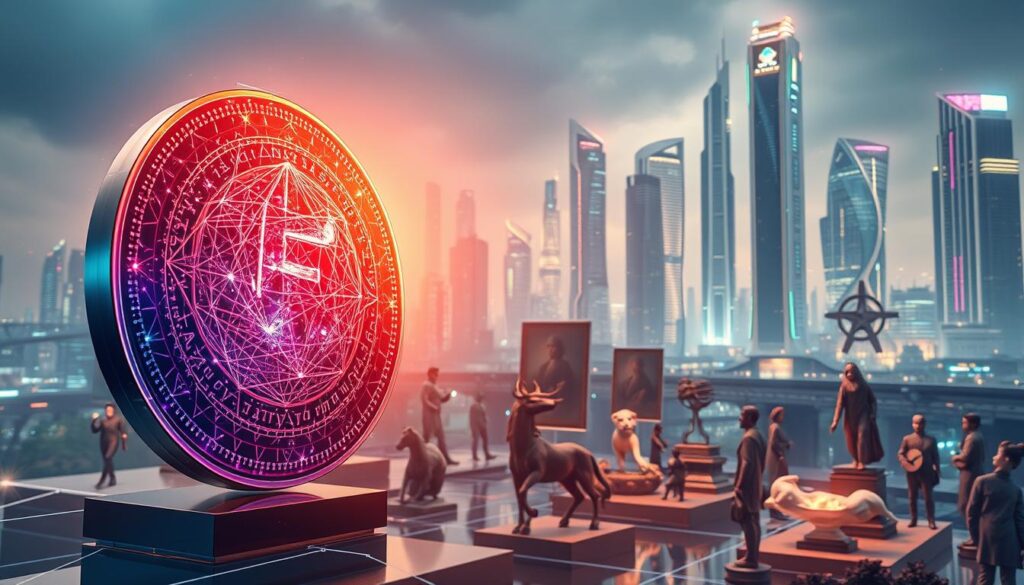
Platforms like OpenSea and Rarible lead the way, with millions in digital art sales. Big deals, like Beeple’s $69 million NFT or Pak’s Christie’s auction, show the market’s growth. Now, people can buy parts of famous art, making it more affordable for everyone.
Tokenization also fixes old problems like fake art. For example, the NBA’s Top Shot uses NFTs for verified video clips. Museums and galleries are exploring digital ownership certificates. This blends physical art with blockchain proof.
As this area grows, artists can reach global markets without traditional middlemen. They keep their work’s legacy safe.
The Benefits of Asset Digitization Through Tokenization
Asset digitization opens up new chances by turning real things into digital ones. It makes it possible to split, trade, and track ownership of things like real estate or art. This change makes finance smoother and lets more people invest worldwide.
Enhanced Liquidity for Previously Illiquid Assets
Tokenization makes assets like real estate or vintage cars into something you can trade. For example, real estate tokens let you sell parts of a property quickly on digital platforms. This way, buyers and sellers meet fast, without the wait of old-fashioned auctions.
Reduced Barriers to Entry for Investors
- Fractional ownership through asset digitization lowers minimum investment amounts
- Platforms like Harbor and Polymath open private markets to more people
- Now, you can invest $500 in a commercial property, not millions
Improved Transparency and Asset Provenance
Blockchain keeps a permanent record of every deal. Art buyers check if a piece is real through its digital details. Real estate investors can see where a property has been. This makes markets like luxury goods or rare items safer and more trustworthy.
Cost Efficiency and Removal of Intermediaries
Smart contracts cut out the need for lawyers and brokers. A 2023 study by Deloitte shows tokenized deals can close up to 60% faster and save up to 30% in fees. This means more money in your pocket from lower costs.
Challenges and Risks in Tokenizing Physical Assets
Tokenizing real-world assets is innovative but comes with challenges. Technical issues like blockchain scalability and interoperability are big hurdles. Legal problems, like different global rules, make following the law hard.
The oracle problem makes linking digital tokens to physical assets tricky. Market risks include low liquidity and disagreements over value. Smart contracts and custody solutions can also be insecure.
- Technical Barriers: Blockchain networks often struggle with speed and cost, slowing real-world asset tokenization. Interoperability gaps between blockchains hinder seamless integration.
- Legal Uncertainty: Jurisdictional differences create confusion. Laws vary widely, leaving tokenized assets in regulatory gray areas.
- Oracle Vulnerabilities: Data feeds linking tokenized assets to physical items can fail, risking mispricing or fraud.
- Market Liquidity: Many tokenized assets trade infrequently, making it hard for investors to exit positions quickly.
Security is key. Bugs in smart contracts have caused hacks, putting tokenized assets at risk. Custody solutions for physical assets like real estate or art also lack standard protocols. To overcome these challenges, we need teamwork from tech experts, regulators, and market players. This will help build trust and safety in tokenization systems.
Regulatory Landscape for Blockchain Asset Tokenization
Blockchain technology is changing how we manage real assets. But, we need clear laws to guide this change. These laws help decide how tokenized assets, like real estate or commodities, can be traded worldwide.

United States Regulatory Framework for Digital Securities
In the U.S., agencies like the SEC check if tokens are securities using the Howey Test. The CFTC looks after commodity-backed tokens. Meanwhile, FinCEN deals with anti-money laundering rules. To stay safe, issuers must follow these rules closely.
Global Perspectives on Tokenized Assets
- Switzerland’s “Travel Rule” makes crypto transfers clear.
- Singapore’s MAS has a blockchain sandbox.
- The EU’s MiCA regulation sets rules for all tokenized assets.
Compliance Requirements for Token Issuers
Issuers must do KYC/AML checks and share asset values. They also need to report to regulators regularly. It’s crucial to have legal advice that knows blockchain technology to keep up with changing laws.
How to Participate in the Tokenized Asset Market
Getting into the asset-backed tokens world needs a clear plan. First, learn about wallets and token standards. Then, start buying. This guide shows you how to start safely and well.
Steps for New Investors in Asset-Backed Tokens
- Choose a secure crypto wallet like MetaMask or Trust Wallet.
- Look into platforms like Polymath or Securitize for tokenization of real-world assets.
- Start with small investments in known assets like real estate or art.
Evaluating Tokenization Platforms
- Check if the platform is legally allowed in your area.
- Make sure they have good security like cold storage and audit reports.
- Compare fees and how easy it is to trade.
- Read what other users say and look at the platform’s history.
Due Diligence Checklist Before Investing
Always check:
- Proof that the assets belong to the platform.
- The token’s economic model and how it’s distributed.
- The team’s experience in blockchain and finance.
- Risks like market changes and legal issues.
Use resources like the SEC’s EDGAR database and Deloitte reports for checks. Spread your investments across different assets and platforms to avoid big risks.
Real Assets on the Blockchain: Success Stories and Case Studies
Blockchain technology has made real assets on the blockchain a reality. Projects in real estate and art use tokenization to innovate. These stories share real results and lessons.
- Florida Real Estate: Harbor’s SEC-Compliant Token Sale – In 2022, Harbor tokenized a $25M commercial property. Investors bought fractions using blockchain technology, unlocking liquidity for previously illiquid real estate.
- Art: Maecenas’ Basquiat Tokenization – A $100M Basquiat artwork was divided into tokens on Ethereum’s blockchain. Buyers tracked provenance via smart contracts, ensuring authenticity and fractional ownership.
- Commodities: De Beers’ Tracr Platform – Blockchain technology tracks diamonds from mine to market, reducing fraud and boosting consumer trust through immutable records.
- Real Estate Funds: Swarm’s Digital REIT – This platform tokenized a $50M property portfolio. Blockchain-based smart contracts automated dividends and minimized intermediary costs.
These examples show real assets on the blockchain can succeed with the right legal framework and secure platforms. They demonstrate how blockchain technology opens markets to global investors while ensuring transparency. Tokenization is now a reality, changing traditional markets.
The Role of Stablecoins in Real-World Asset Tokenization
Stablecoins are key in the world of asset-backed tokens and tokenized assets. They are made to keep their value steady by linking it to real things. This helps make blockchain finance more stable.
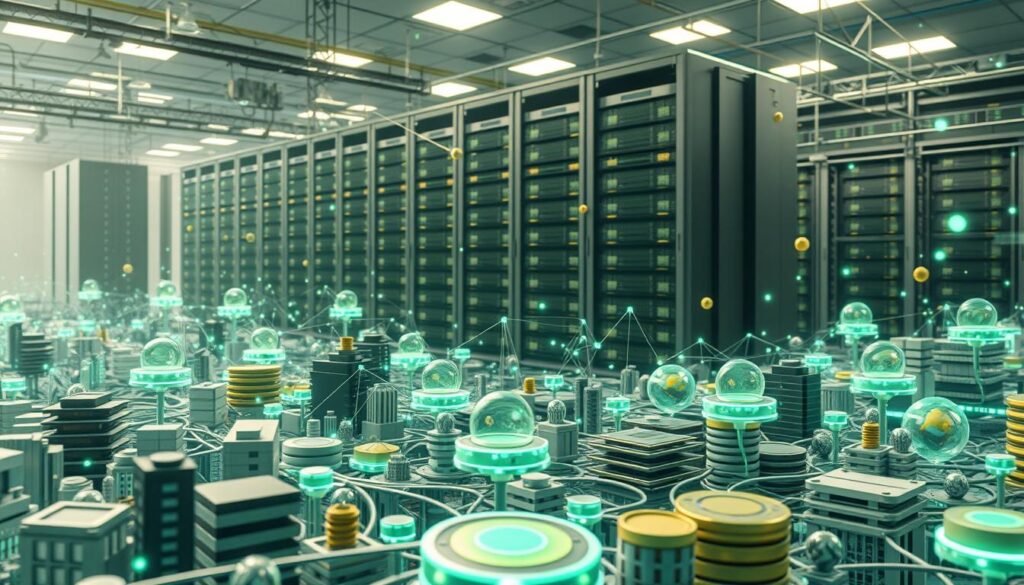
Unlike Bitcoin, which can swing wildly, asset-backed tokens like stablecoins are tied to things like USD or gold. This keeps their value steady. It makes them perfect for everyday use and for big institutions to trust.
How Asset-Backed Stablecoins Differ from Other Tokens
Stablecoins stand out because:
- Stability focus: They focus on keeping their price steady, thanks to the assets they’re backed by.
- Regulatory alignment: Many stablecoins work with financial rules to make sure they’re okay to use.
Major Stablecoin Projects Connected to Physical Assets
Some big names are:
- USDC: Linked to the US dollar, it’s a big player in DeFi.
- Paxos Gold: It’s backed by gold, offering a stablecoin tied to a commodity.
- RealT: It’s a leader in turning real estate into tokenized assets that can be split.
But, there’s a catch. The US wants stablecoins to be more open about their reserves. These projects show how stablecoins are crucial for tokenized assets. They also connect traditional finance with blockchain.
Technological Innovations Advancing Asset Tokenization
Layer-2 scaling solutions like Optimistic Rollups and zk-Rollups are solving blockchain congestion. They reduce fees and speed up transactions. This makes blockchain asset tokenization good for fast trading of digital securities.
Cross-chain bridges, like Polkadot’s interoperability protocols, let assets move easily between networks. This includes Ethereum, Solana, and others. It opens up the global market for these assets.
- Zero-knowledge proofs keep transactions private in digital securities without losing audit trails.
- Decentralized finance platforms like Aave offer lending pools for tokenized real estate or art. This unlocks new revenue streams.
- Chainlink oracles provide real-world data to smart contracts. This enables automated insurance payouts for tokenized infrastructure assets.
Artificial intelligence analyzes market trends to set the right prices for tokenized commodities. Machine learning models predict liquidity needs for blockchain asset tokenization platforms. These tools help lower risks in valuing physical assets like fine art or rare metals.
Innovations in tokenization middleware let companies issue compliant digital securities on enterprise-grade blockchains like Hyperledger. This makes it easier for industries to adopt tokenization.
Companies can now tokenize oil reserves or renewable energy credits using privacy-first solutions like Confidential Transactions. This creates a faster, more inclusive ecosystem for real-world assets to exist as programmable digital securities.
Institutional Adoption of Tokenized Asset Classes
Larger financial institutions are now using digital securities in their work. Banks like JPMorgan and Goldman Sachs are looking into new ways. They want to offer small parts of big investments, like real estate or private equity funds.
These steps show a big change. They are moving to blockchain for easier trading and rules.
Big banks are working with tech companies like IBM or R3. They build special blockchains for big deals. These systems make sure everything is safe and follow rules against money laundering.
For example, HSBC tested a digital platform for loans. It made settling deals much faster, from days to hours.
- Custom compliance tools: Automate know-your-customer (KYC) checks during token issuance.
- Private blockchains: Enable secure collaboration between institutional investors and custodians.
- Asset diversification: Allow fractional ownership access to previously exclusive markets like infrastructure projects.
Big companies also focus on working together better. Firms like Axoni help companies like energy ones. They make it possible for investors to buy into oil deals. This is different from platforms for regular people, as it focuses on safety and special contracts.
The Future Landscape of Tokenized Real-World Assets: What Lies Ahead
Asset digitization is changing how we see real-world assets. Things like carbon credits, intellectual property, and infrastructure projects might soon be tokenized. Blockchain technology could link up with AI and IoT, making it easier to track and manage assets.
This could open up new opportunities for investors. It might make it easier for more people to invest in assets that were once hard to get into.
Regulations will play a big role in how fast this happens. Some places are starting to figure out how to handle digital securities. Companies like Harbor and Polymath are working on solutions that follow the rules.
It might take 5–10 years for this to become common. This depends on how well policies and technology work together.
It’s important to keep an eye on blockchain and stablecoins. Watching platforms like OpenSea and SEC decisions can give us a glimpse of what’s coming. Those in finance or real estate can start small projects to see how it works.
But, we need to be careful. We must balance new ideas with safety to make the most of digital assets.
FAQ
What is the tokenization of real-world assets?
Tokenization turns physical assets like real estate and art into digital tokens on a blockchain. This makes it easier for investors to own parts of these assets.
How does blockchain technology facilitate asset tokenization?
Blockchain technology makes asset tokenization secure and transparent. It turns assets into digital tokens. This ensures that who owns what is clear and can’t be changed.
What are asset-backed tokens?
Asset-backed tokens are digital tokens tied to real assets. They let you own a part of an asset without buying the whole thing.
What are digital securities, and how do they differ from traditional securities?
Digital securities, or security tokens, are digital versions of traditional securities. They offer similar rights but are easier to trade and settle. They can also follow rules automatically through smart contracts.
What benefits does tokenization bring to investors?
Tokenization makes assets more liquid and easier to own. It also increases transparency and can save money by cutting out middlemen.
Can any physical asset be tokenized?
Almost any asset can be tokenized, like real estate and art. But, it depends on the legal and regulatory rules for each asset.
What are the challenges associated with tokenizing physical assets?
Challenges include technical issues and legal hurdles. There’s also the need to link digital tokens to real assets securely and protect against fraud.
What is fractional ownership in real estate tokenization?
Fractional ownership lets many investors share a property. It makes real estate more accessible, even for those who can’t afford it all.
How are regulatory frameworks evolving for tokenized assets?
Rules for tokenized assets are changing. Governments aim to protect investors while encouraging innovation in digital assets.
What future trends are anticipated for asset tokenization?
Future trends include tokenizing new assets and global standards. Technology will also improve, making blockchain more powerful for asset tokenization.



